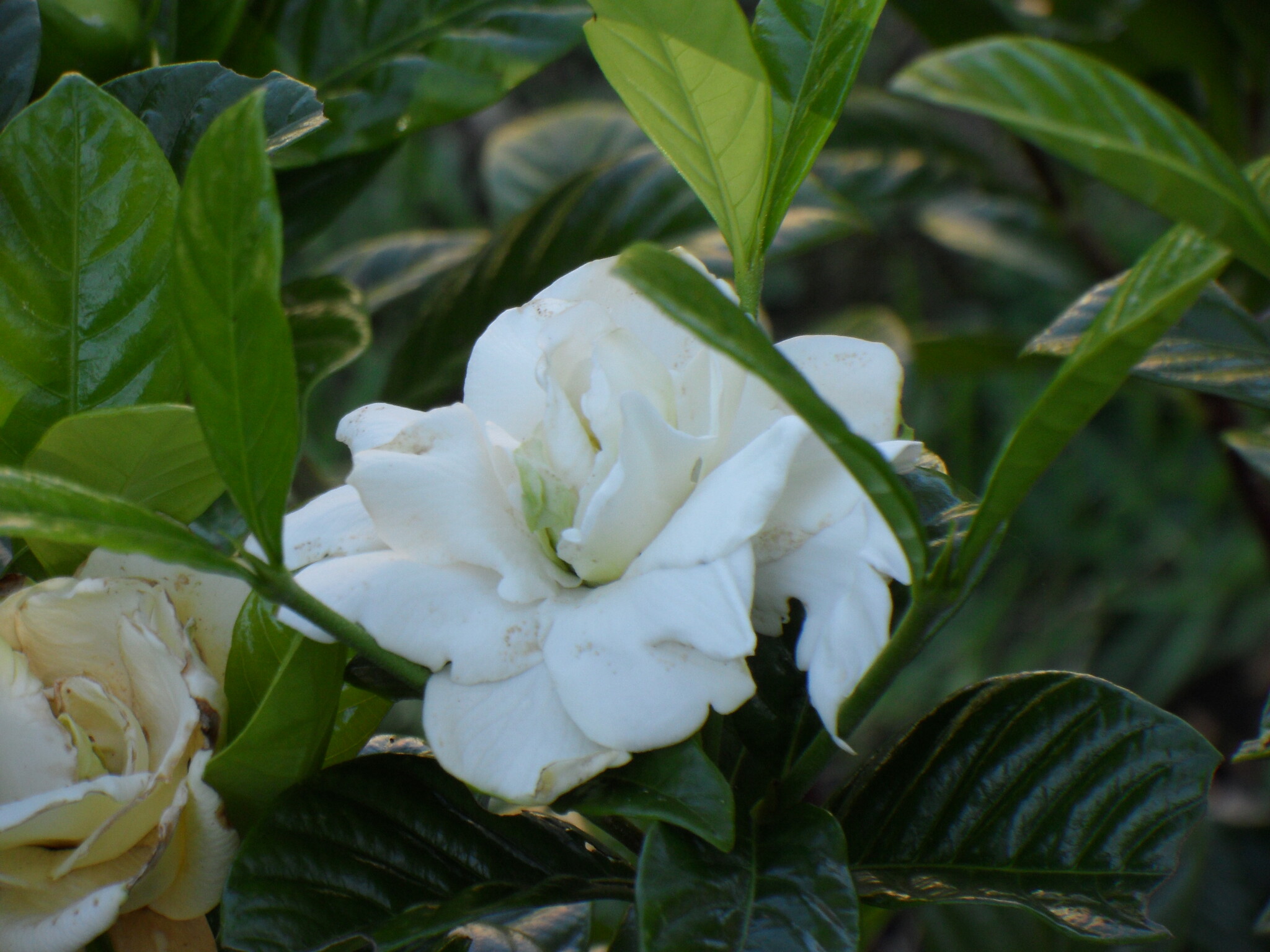
Commemorating Dr Alexander Garden (1730–91), a botanical correspondent of Linnaeus from S Carolina.
Shrubs and trees. Leaves opposite or in whorls of 3-4; stipules sheathing, free or united. Flowers axillary or terminal, solitary or in few-flowered clusters, cylindrical or tubular to funnel-shaped with 5-12 lobes, yellow or white, fragrant. Stamens 5-12, attached at the throat of the tube. Ovary with 1 chamber containing numerous ovules. Fruit a fleshy or hard berry.
Grown for the exquisitely fragrant flowers borne from summer to winter. Australian tropical species such as G. jardinei F. Muell., G. kershawii F.M. Bailey, G. macgillivraei Benth., G. megasperma F. Muell. and G. scabrella Puttock are occasionally cultivated in warm-climate areas. G. thunbergia L. f., White Gardenia, from S Africa is also occasionally cultivated.
Cultivars: In recent times a number of new cultivars have been released — the following are listed but little is known about their appearance or their history: ‘Aimee Yoshiba’, ‘Four Seasons’, ‘Glacier’, ‘Golden Magic’, ‘Magnifica’, ‘Magnifica Variegata’, ‘Mrs Stone’, ‘Ocean Pearl’, ‘Professor Pucci’, ‘Star’, ‘True Love’ and ‘Yoshi Mira’.
Hardwood or softwood cuttings, occasionally by seed.
The flowers are used as a source of perfumes and the fruit the source of a yellow dye and a range of medicines used mostly in the treatment of colds and flu.
Flowers not always 5-parted, mostly funnel-shaped and hairless within, cf. Rothmannia.
About 250 species of the tropical Old World but Australia has 16 species.
Puttock (1988, 1997).
Source: (2002). Rubiaceae. In: . Horticultural Flora of South-eastern Australia. Volume 4. Flowering plants. Dicotyledons. Part 3. The identification of garden and cultivated plants. University of New South Wales Press.
